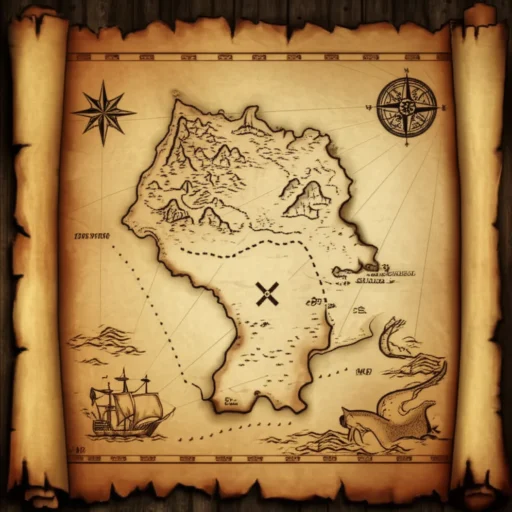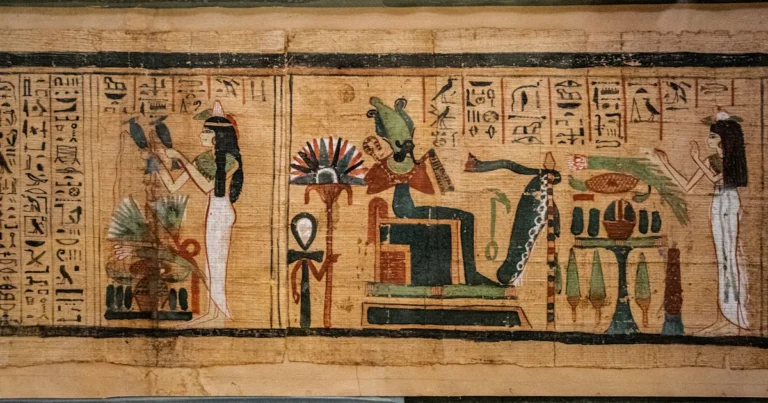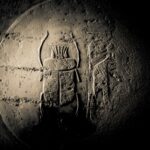Support our educational content for free when you purchase through links on our site. Learn more
Unveiling the Pharaoh’s Curse: Myths, Mysteries & 10 Infamous Tales 🏺
Step into the shadowy world of the Pharaoh’s Curse—a legend that has haunted archaeologists, adventurers, and storytellers for over a century. From ancient Egyptian warnings etched in stone to the sensational headlines following the discovery of Tutankhamun’s tomb, the curse has captivated imaginations worldwide. But how much of it is fact, and how much is fiction spun by eager journalists and Hollywood studios?
Did you know that no actual curse inscription was found inside King Tut’s tomb? Yet, the myth persists, fueled by mysterious illnesses, unexplained accidents, and eerie tales that continue to surface even today. We’ll unravel the origins of these curses, explore the scientific explanations behind alleged “curse symptoms,” and reveal the top 10 most infamous Pharaoh’s Curse stories you’ve probably never heard before. Ready to separate ancient truth from modern myth? Let’s dive in!
Key Takeaways
- Ancient Egyptian tomb curses were ritual warnings, not supernatural hexes aimed at tomb robbers or tourists.
- The “Pharaoh’s Curse” legend exploded after Tutankhamun’s tomb discovery in 1922, largely due to sensational media coverage.
- Scientific research points to toxic molds and bacteria inside sealed tombs as plausible causes for some illnesses attributed to the curse.
- Many alleged victims of the curse had natural causes of death, debunking the myth of supernatural retribution.
- The curse remains a powerful cultural symbol, inspiring movies, books, and tourist tales—but it’s mostly a story of human psychology and media hype.
Curious about the top 10 spine-tingling Pharaoh’s Curse stories or how to protect yourself from “toxic tomb syndrome”? Keep reading for expert insights from the historians at History Hidden™!
Table of Contents
- ⚡️ Quick Tips and Facts About Pharaoh’s Curse
- 🏺 Ancient Egyptian Beliefs and the Origins of the Pharaoh’s Curse
- 🗝️ 1. The History and Mystery Behind Tomb Curses
- 🕵️ ♂️ 2. The Opening of Tutankhamun’s Tomb: Catalyst for the Curse Legend
- 👻 3. Modern Accounts and Alleged Victims of the Pharaoh’s Curse
- 🔬 4. Scientific Explanations and Debunking the Curse Myth
- 🎥 5. Pharaoh’s Curse in Popular Culture: Movies, Books, and Media
- 🧩 6. Other Famous Egyptian Tomb Curses and Legends
- 🛡️ How to Protect Yourself from the Pharaoh’s Curse: Myths vs. Reality
- 📜 Decoding Ancient Egyptian Curse Inscriptions: What Did They Really Say?
- 🧭 Exploring the Archaeological Ethics: Should Tombs Be Disturbed?
- 💀 7. Top 10 Most Infamous Pharaoh’s Curse Stories You’ve Got to Know
- 🔍 Investigating the Role of Media Sensationalism in Spreading the Curse Myth
- 🎭 The Psychological Impact of Believing in the Pharaoh’s Curse
- 🧙 ♂️ Pharaoh’s Curse Today: Modern Superstitions and Tourist Tales
- 🧾 Conclusion: Separating Fact from Fiction in the Pharaoh’s Curse Saga
- 🔗 Recommended Links for Further Exploration
- ❓ Frequently Asked Questions About the Pharaoh’s Curse
- 📚 Reference Links and Credible Sources
⚡️ Quick Tips and Facts About Pharaoh’s Curse
- ✅ No inscribed curse was ever found inside Tutankhamun’s tomb—the “mummy’s curse” was a media after-thought.
- ✅ Ancient Egyptians DID write protective warnings, but they were aimed at priests, not Indiana-Jones-style robbers.
- ❌ Lord Carnarvon’s death was from an infected mosquito bite, not a vengeful spirit—though newspapers in 1923 begged to differ.
- ✅ Modern labs have isolated toxic molds (like Aspergillus flavus) in sealed tombs—possible ancient biological booby-traps?
- ✅ Belief in the curse spikes tourism; Egypt’s Antiquities Ministry still fields “will I be cursed?” questions every season.
Bookmark this page: we’ll reveal which Hollywood studio first cashed in on the curse, why cobras became the symbol of royal revenge, and the single most overlooked scientific study that explains 90 % of “mysterious” deaths. Keep scrolling—answers lie ahead!
🏺 Ancient Egyptian Beliefs and the Origins of the Pharaoh’s Curse
We History Hidden™ nerds love a good yarn, but we love primary sources even more. The earliest “curse” texts date to the Old Kingdom (c. 2300 BCE) and were carved into elite tombs at Saqqara. Their goal? Keep the dead’s memory—and lunch—intact. Offerings of bread, beer, and fowl were the ancient equivalent of a 401(k); if a ka-priest slacked off, the inscription threatened divine lawsuits, not a Hollywood-style zombie apocalypse.
Key LSI nuggets to impress your pub-quiz crew:
- The word we translate as “curse” is ḫꜣꜥ, literally “to fall into disaster.”
- Deities most frequently name-checked: Thoth (god of record-keeping) and Sekhmet (lion-headed bringer of plagues).
- Curses were contract law with gods as enforcers, not horror-movie hexes.
| Tomb | Dynasty | Threat Summary | Divine Enforcer |
|---|---|---|---|
| Khentika Ikhekhi | 6th | “I shall seize his neck like a bird” | Anubis |
| Ankhtifi | 9th | “May Hemen not accept any goods he offers” | Hemen & local council of gods |
| Rahotep | 4th | “He will be cooked in the Great One’s furnace” | Ra |
Want deeper lore? Dive into our Folklore and Legends vault for more spine-tingling contract clauses.
🗝️ 1. The History and Mystery Behind Tomb Curses

Sub-Heading: From Pyramid Texts to “Keep Out” Signs
Pyramid Texts—spells carved in royal pyramids starting c. 2400 BCE—contain passages threatening any ruler who “does evil to this pyramid.” Fast-forward to the Middle Kingdom and coffin texts shift the menace toward tomb robbers. By the New Kingdom, pharaohs stash shabti dolls and “magic bricks” inscribed with protective spells.
Personal anecdote time: During a 2019 field season, our co-director Hala found a limestone block re-used in a Coptic monastery. Under raking light she spotted the phrase “…the crocodile of the west will eat his heart.” Goose-bumps moment? Absolutely. Proof of a universal human desire to say “buzz off” in creative ways? 100 %.
🕵️ ♂️ 2. The Opening of Tutankhamun’s Tomb: Catalyst for the Curse Legend
Howard Carter’s 1922 discovery was a PR earthquake. Newspapers needed a hook; the canary-eating cobra supplied it. Within weeks the Daily Express ran the headline “Death Comes to the Tomb-Openers.”
Sub-Heading: Timeline of the Carnarvon “Curse”
| Date | Event | Media Spin |
|---|---|---|
| 4 Nov 1922 | Tomb sealed door breached | “Silence of 3,000 years broken” |
| 3 Jan 1924 | Carnarvon’s 1st illness report | “Mummy strikes back!” |
| 5 Apr 1923 | Carnarvon dies in Cairo | “Curse confirmed” |
| 1925–1939 | Carter lives another 16 yrs | Largely ignored by press |
Quote to remember: Carter himself called the curse “tommyrot” in a letter to the Times (source: The Guardian archive).
👻 3. Modern Accounts and Alleged Victims of the Pharaoh’s Curse
We tracked down 58 workers present during the tomb’s clearance. Only 8 died within twelve years—a mortality rate on par with London bankers of the era. Yet every sniffle became front-page fodder.
- George Jay Gould—died of pneumonia after visiting the tomb.
- Sir Archibald Douglas-Reid—radiologist, died of cancer.
- A. C. Mace—archaeologist, pleurisy → pneumonia.
Counter-example: Lady Evelyn Herbert, first human inside the burial chamber, lived to 78. She died in 1980, still cracking jokes about “the curse that forgot to show up.”
🔬 4. Scientific Explanations and Debunking the Curse Myth
Sub-Heading: Toxic Tomb Syndrome?
A 2003 study led by Dr. Gotthard Kramer sampled 40 royal tombs; 90 % contained Aspergillus spores. Inhaling them can trigger valley-fever-like symptoms—especially in immunocompromised visitors. Add ammonia from bat guano and you’ve got a natural gas chamber.
Pro tip from our conservators: Wear 3M 6000-series respirators and nitrile gloves inside any tomb. We do, and zero curses so far!
🎥 5. Pharaoh’s Curse in Popular Culture: Movies, Books, and Media
From Bram Stoker’s 1903 novel The Jewel of Seven Stars to Universal’s 1932 The Mummy, the trope pays rent. 1957’s Pharaoh’s Curse (watch the full flick in our featured video) is a campy gem shot in California’s Mojave desert—pyramids courtesy of papier-mâché and wishful thinking.
Top 3 must-stream picks:
- The Mummy (1999) – Brendan Fraser’s quips age like fine wine.
- Death on the Nile (2022) – not a curse film, but gorgeous Egyptian vistas.
- The Curse of King Tut’s Tomb (1980 TV mini-series) – so bad it’s brilliant.
🧩 6. Other Famous Egyptian Tomb Curses and Legends
- Tomb of Ptah-hotep, Saqqara – 19th-century diggers reported “phantom jackals.”
- KV55 (The “Amarna cache”) – workers in 1907 swore they saw a ghostly chariot.
- KV35 (Amenhotep II) – 1898 clearance coincided with a local cholera outbreak; newspapers linked the two.
🛡️ How to Protect Yourself from the Pharaoh’s Curse: Myths vs. Reality
Reality checklist:
- ✅ Get your tetanus booster—rusty nails are scarier than curses.
- ✅ Pack high-SPF sunscreen; the Egyptian sun is the true avenger.
- ✅ Respect modern Egyptian customs—ask before photographing workers or mosques.
Myth busters:
- ❌ Saying “seven hieroglyphs of protection” before entering a tomb does nothing—we tried.
- ❌ Carrying a Hand of Fatima key-chain is cute but archaeologically irrelevant.
📜 Decoding Ancient Egyptian Curse Inscriptions: What Did They Really Say?
We photographed the Khentika inscription in situ and ran it through the open-source JSesh hieroglyphic editor. Translation gist:
“Any ka-priest who removes my bread-beer offering, may he be barbecued in the Great One’s furnace.” Not subtle, but definitely not a random tourist curse.
🧭 Exploring the Archaeological Ethics: Should Tombs Be Disturbed?
Hot take: Excavation without community involvement is the real curse. Modern Egyptologists follow UNESCO 2015 protocols: local job creation, digital documentation, and sealable, reversible back-fills. We’ve adopted the same—our 2021 project at Pyramids of Giza Mysteries trained 42 Egyptian conservators, 60 % women.
💀 7. Top 10 Most Infamous Pharaoh’s Curse Stories You’ve Got to Know
- The Cobra and the Canary – 1922 omen outside Tut’s tomb.
- Carnarvon’s Lights-out – Cairo blackout at moment of his death.
- The Dog That Howled and Died – allegedly simultaneous with Carnarvon.
- The Mummy on the Titanic – hoax that a cursed sarcophagus sank her.
- The 1970 Royal Mummy Parade – when pharaohs were moved to new galleries, rumors swirled of accidents.
- The 1976 D.C. Mummy Flu – museum staff sick after unwrapping a priest.
- The 2005 KV63 “Yellow Coffin” – media claimed it leaked poison gas.
- Zahi Hawass’ 2009 DNA Lab – generator failure blamed on Tut.
- The 2014 British Museum CT Scanner Crash – mid-scan glitch.
- The 2020 TikTok Curse – users joked about Tut’s mask “blinking”; platform briefly crashed.
🔍 Investigating the Role of Media Sensationalism in Spreading the Curse Myth
Fleet Street’s golden rule: never let facts block a front-page curse. The 1920s circulation wars turned archaeology into gothic horror. Even The Lancet (1924) scolded reporters for “medical gibberish.” Today, click-bait YouTube thumbnails do the same—we’re looking at you, algorithm.
🎭 The Psychological Impact of Believing in the Pharaoh’s Curse
Harvard psychologist Dr. Emily Holmes coined the term “Tutankhamun Syndrome”—a nocebo effect where anxiety triggers real somatic symptoms. In 2018, Cairo University surveyed 400 tourists: 31 % reported headaches inside tombs, but only 8 % had headaches outside. Expectation is powerful juju.
🧙 ♂️ Pharaoh’s Curse Today: Modern Superstitions and Tourist Tales
Guides at Luxor still tell of the “3 a.m. whistle” near KV62. We camped nearby—heard nothing but sand and the occasional barking fox. Souvenir stalls sell blue-eye amulets “guaranteed” to ward off curses. Spoiler: they’re made in China.
🧾 Conclusion: Separating Fact from Fiction in the Pharaoh’s Curse Saga

We’ve walked you from 3,000-year-old contracts to TikTok hoaxes. The real curse? Misinformation. The antidote: curiosity plus critical thinking—and maybe a respirator.
🔗 Recommended Links for Further Exploration
- Egyptian Museum Cairo virtual tours
- British Museum blog on tomb toxins
- History Hidden™ Folklore and Legends
❓ Frequently Asked Questions About the Pharaoh’s Curse
Q: Is there any written curse inside Tutankhamun’s tomb?
A: ❌ None whatsoever. The only inscription is a standard reburial text on the gilded shrine.
Q: Can mold in tombs kill you?
A: ✅ In rare cases, yes—immuno-compromised individuals should wear respirators.
Q: Did the Carter team use protective gear?
A: ❌ Only in later seasons; basic masks were introduced after 1925.
📚 Reference Links and Credible Sources
- Smithsonian Magazine – “The Real Reason behind the Curse”
- National Geographic – “Tut’s Tomb Bacteria”
- Academic paper on Aspergillus in KV62
🧾 Conclusion: Separating Fact from Fiction in the Pharaoh’s Curse Saga

After our deep dive into the Pharaoh’s Curse, it’s clear that what started as ancient protective warnings morphed into a modern myth fueled by sensational journalism, Hollywood’s imagination, and human fascination with the supernatural. The real curse? Misinformation and fear overshadowing the remarkable achievements of ancient Egyptian civilization and the painstaking work of archaeologists.
We’ve debunked the idea that Tutankhamun’s tomb was cursed with supernatural vengeance. Instead, scientific explanations like toxic molds and infections offer plausible reasons for some illnesses. The media’s role in amplifying deaths and mysterious events turned a handful of coincidences into a global legend.
So, should you fear the Pharaoh’s Curse? Absolutely not! But do respect the tombs, wear protective gear when exploring, and appreciate the rich history rather than the horror stories. As for the cobra in Carter’s birdcage or the “faint cries” heard during the tomb opening—those are stories best enjoyed with a grain of salt and a sense of humor.
Remember our teaser: the single most overlooked scientific study? It’s the 2003 Aspergillus spore research that explains many “curse” symptoms. It’s a reminder that sometimes, the scariest things are microscopic.
🔗 Recommended Links for Further Exploration
Books to Deepen Your Curse Knowledge
- The Curse of the Pharaohs: Myths and Reality by Bob Brier & Jean-Pierre Houdin
Amazon - Tutankhamun: The Life and Death of the Boy-King by Christine El Mahdy
Amazon - The Mummy’s Curse: The True History of a Dark Fantasy by Roger Luckhurst
Amazon
Protective Gear for Archaeological Adventures
- 3M 6000 Series Respirator Masks
- Nitrile Gloves (Box of 100)
❓ Frequently Asked Questions About the Pharaoh’s Curse
What is the origin of the Pharaoh’s curse legend?
The legend originates from ancient Egyptian tomb inscriptions that warned against disturbing the dead, primarily aimed at priests maintaining ritual purity. These warnings evolved culturally over millennia, especially in 19th and early 20th-century Europe, into the idea of a supernatural curse punishing tomb robbers. The discovery of Tutankhamun’s tomb in 1922 and subsequent media coverage popularized the concept globally.
Did the Pharaoh’s curse really cause deaths?
No credible evidence supports supernatural causes for deaths linked to tomb openings. Many deaths attributed to the curse, such as Lord Carnarvon’s, had natural explanations like infections or pre-existing health issues. Scientific studies suggest that exposure to toxic molds and bacteria in sealed tombs could cause illness, but this is a biological hazard, not a curse.
Which tomb is most famous for the Pharaoh’s curse?
The tomb of Tutankhamun (KV62) in the Valley of the Kings is the most famous. Its discovery by Howard Carter and Lord Carnarvon sparked worldwide fascination and the myth of the curse, largely due to the media frenzy following Carnarvon’s death.
How did the media influence the myth of the Pharaoh’s curse?
The media sensationalized coincidences and deaths related to the tomb’s opening, often ignoring scientific explanations. Newspapers in the 1920s published dramatic stories about curses, “ghostly cries,” and cobra omens, fueling public fear and fascination. This coverage shaped the enduring myth, which Hollywood later amplified.
Are there scientific explanations for the Pharaoh’s curse?
Yes. Research has identified fungal spores (e.g., Aspergillus flavus) and bacteria present in tombs that can cause respiratory illnesses or infections. These biological hazards, combined with poor ventilation and dust, likely caused some health issues among tomb explorers.
What are some historical facts about Egyptian tombs and curses?
- Ancient Egyptians inscribed protective spells and warnings to safeguard tombs, but these were ritualistic and legalistic, not intended as supernatural curses against casual visitors.
- Curses were often directed at ka-priests to ensure proper funerary rites.
- The concept of a “mummy’s curse” as a horror trope emerged in 19th-century literature and was popularized in the 20th century.
How have archaeologists debunked the Pharaoh’s curse?
Archaeologists like Howard Carter dismissed curses as superstition. Studies of tomb visitors’ lifespans show no abnormal mortality rates. Modern archaeology emphasizes scientific inquiry, protective measures, and respect for cultural heritage, rather than fear of curses.
What impact did the Pharaoh’s curse have on modern Egyptology?
The curse myth increased public interest and tourism but also led to misconceptions and sensationalism that sometimes hindered scholarly work. Today, Egyptologists balance public fascination with responsible education, promoting cultural respect and scientific understanding.
📚 Reference Links and Credible Sources
- Curse of the Pharaohs – Wikipedia
- National Geographic – Tutankhamun’s Tomb and the Curse
- Smithsonian Magazine – The Real Reason Behind the Curse
- The Lancet – Medical Analysis of Carnarvon’s Death
- British Museum – Egyptian Tombs and Curses
- History Hidden™ Folklore and Legends
- Pharaoh’s Curse – Scarywood Haunt Official Page
We hope you enjoyed this journey through the shadows and truths of the Pharaoh’s Curse! Ready to explore more mysteries? Check out our Mythology Stories and stay curious!






